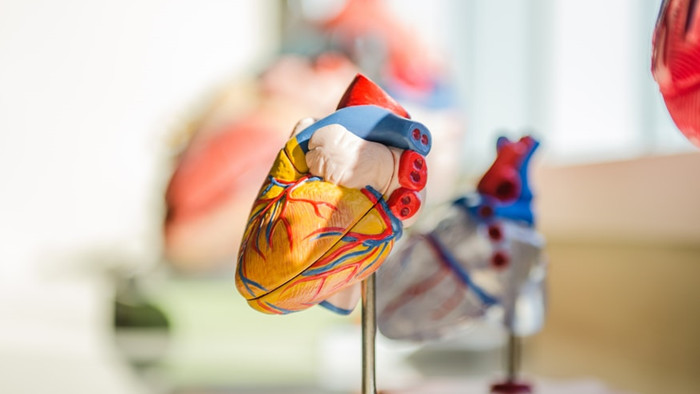Nervous System Intervention
Nervous System Intervention – Ultrasonic Atomizing Nozzle – Cheersonic
Neurointerventional techniques, as the name suggests, are used to treat neurological diseases. Under the support of digital subtraction angiography (DSA) system, it adopts intravascular catheter operation technology, through selective angiography, embolization, dilatation, mechanical removal, drug delivery and other specific methods to treat lesions involving the human neurovascular system. Diagnose and treat. It is an emerging minimally invasive clinical technology, which opens up new ideas and treatment avenues for many vascular diseases of the brain and spinal cord. It can not only solve many cerebrovascular diseases independently, but also can be skillfully combined with traditional open surgery and radiation therapy, so that the previously intractable or difficult diseases can be treated with satisfactory results.

Main product categories in the field of neurointervention
Mainly include: 1. Carotid stents: Carotid stents are usually self-expanding nickel-titanium superelastic alloy stents. Self-expanding carotid stents usually have ideal visual support force and continuous expansion force, meet the required mechanical properties, and at the same time have good elasticity and minimal stimulation to the carotid sinus. 2. Distal protector: The distal protector is a filter fixed on the guide wire. Before interventional treatment, it is placed at the distal end of the stenosis to filter the shedding plaque, thereby avoiding paralysis and damage caused by plaque shedding. Stroke and other diseases. 3. Intracranial stent system: The intracranial artery stent system is an interventional device for improving the blood supply to the brain tissue for lesions caused by intracranial artery stenosis and obstruction. 4. Endovascular treatment devices for intracranial aneurysms: The endovascular treatment methods for intracranial aneurysms mainly include parent artery occlusion, vascular tissue engineering technology, intramural balloon embolization of aneurysm with vascular embolization as the core, and paralysis total embolization. , Liquid embolism.
Aorta and peripheral vessels
Peripheral vascular intervention devices are mainly stents for peripheral arteries and meridians and stent-graft devices, mainly renal artery stents, iliac artery stents, subclavian artery stents, aortic aneurysm covering stents, iliac aneurysm covering stents, and femoral aneurysm covering stents. Stents, iliac vein stents, femoral vein stents and varicose vein laser treatment equipment. Peripheral vascular stents are mainly used to treat peripheral vascular stenosis. Renal artery stenosis is a clinically underdiagnosed disease that may cause hypertension, renal impairment, chronic heart failure and emphysema in severe cases. The use of renal artery stents can perform revascularization, control hypertension, prevent various complications, and improve renal function.
Tumor interventional therapy device
Interventional devices for tumor diseases mainly include tumor feeding arterial embolization and drug perfusion, preoperative tumor blood vessel embolization, tumor percutaneous biopsy, radiofrequency ablation, cryoablation (argon-helium knife), radioactive seed implantation, and various non-invasive techniques. Vascular cavity angioplasty (including dilatation and stenting of narrowed urinary tract, digestive tract, respiratory tract, biliary tract, etc.), local inactivation of solid tumors (percutaneous intratumoral drug injection, radiofrequency ablation), cyst abscess drainage Surgery, ostomy (stomach, bladder, etc.), minimally invasive lithotripsy for bile duct and kidney stones, vertebroplasty for bone metastases or vertebral compression fractures, plexus block for chronic pain, etc.
endoscopy
Endoscopic diagnostic equipment is widely used in the clinical diagnosis and treatment of diseases such as the digestive tract and respiratory tract. Endoscopic diagnosis and treatment technology is a brand-new clinical technology that inserts an endoscope into the endoscope. . According to the function of endoscopy, endoscopy can be divided into digestive endoscopy and respiratory endoscopy. Digestive endoscopy mainly includes gastroscope, endoscopic ultrasound, colonoscopy, duodenoscopy, enteroscopy, and capsule endoscopy commonly used in the diagnosis of small bowel diseases. Respiratory endoscopy mainly includes bronchoscopy, ultrasound bronchoscopy and rigid bronchoscopy.
Medical endoscopy diagnosis and treatment technology
At present, there are three main types of medical endoscopes. One is to use microelectronic devices (micro CCD) to transmit images captured in the body by means of electrical signals with the help of traditional optical micro-imaging lenses. Due to the limitation of the size of the micro CCD, the outer diameter of the entire speculum is difficult to be less than 5mm, and it cannot be used in narrow places, which has limitations. The other type is the traditional hard tube endoscope, which uses the principle of traditional optics and uses a group of rod-shaped microlenses to transmit the images in the body, which can be directly observed with the naked eye or received by the CCD for monitor display. Since it is very difficult to process tiny (diameter less than 1.0mm) photographic lenses or rod lens groups by traditional methods, although the cost of this type of endoscope is lower than that of electronic endoscopes, the working distance cannot be shortened and it is not flexible. There are also limitations to use. The third type is the ultra-fine endoscope based on self-focusing microlens. The self-focusing microlens is used as the objective lens, and the image in the body is transmitted to the body by the image transmission fiber or the array image transmission beam, and then the image is transmitted by the microscopic optical system. It is transmitted to the CCD, and after the image processing system becomes a digital signal, the image is displayed, processed and analyzed on the computer and transmitted to the Internet. Compared with the first two types, it has a creative breakthrough in technology.
Article source: Medtec China
Cheersonic is the leading developer and manufacturer of ultrasonic coating systems for applying precise, thin film coatings to protect, strengthen or smooth surfaces on parts and components for the microelectronics/electronics, alternative energy, medical and industrial markets, including specialized glass applications in construction and automotive.
